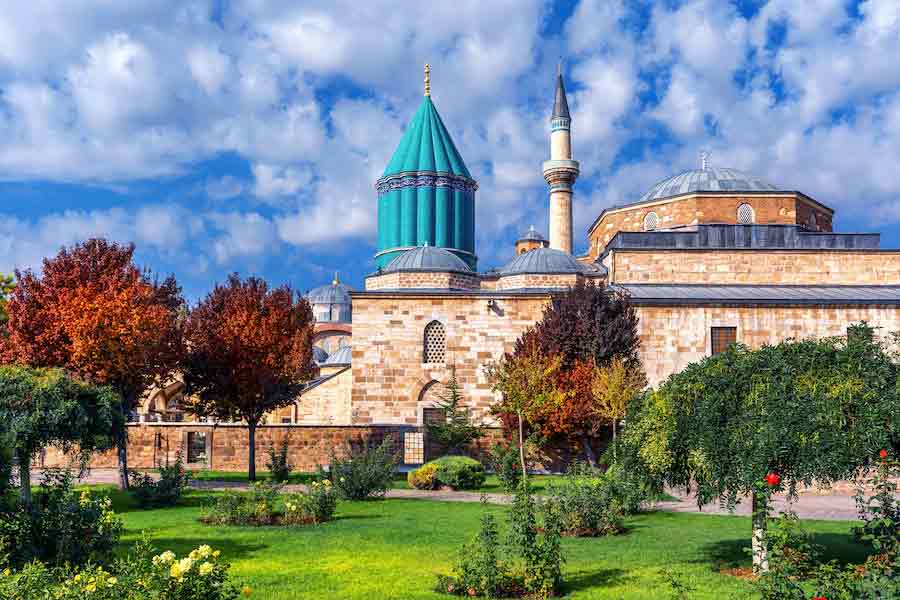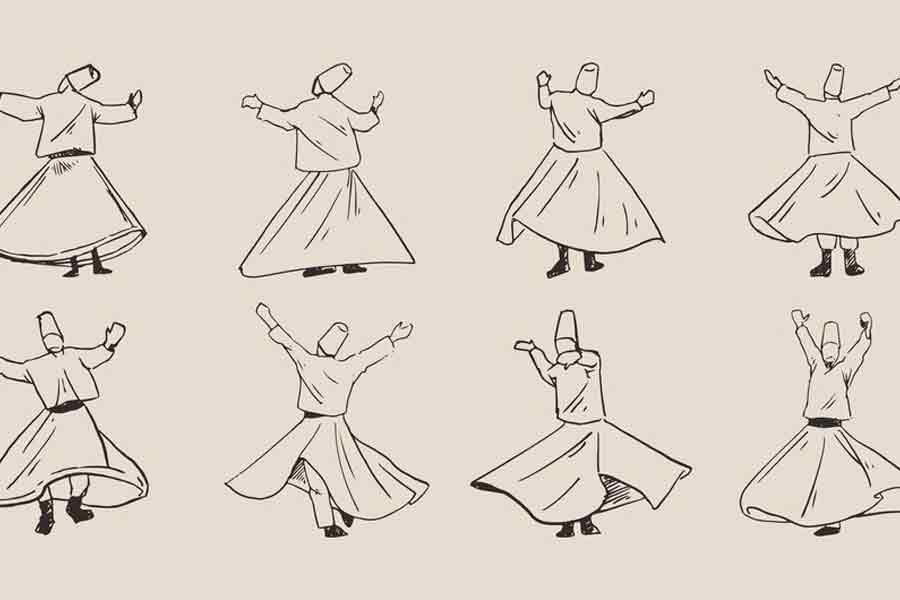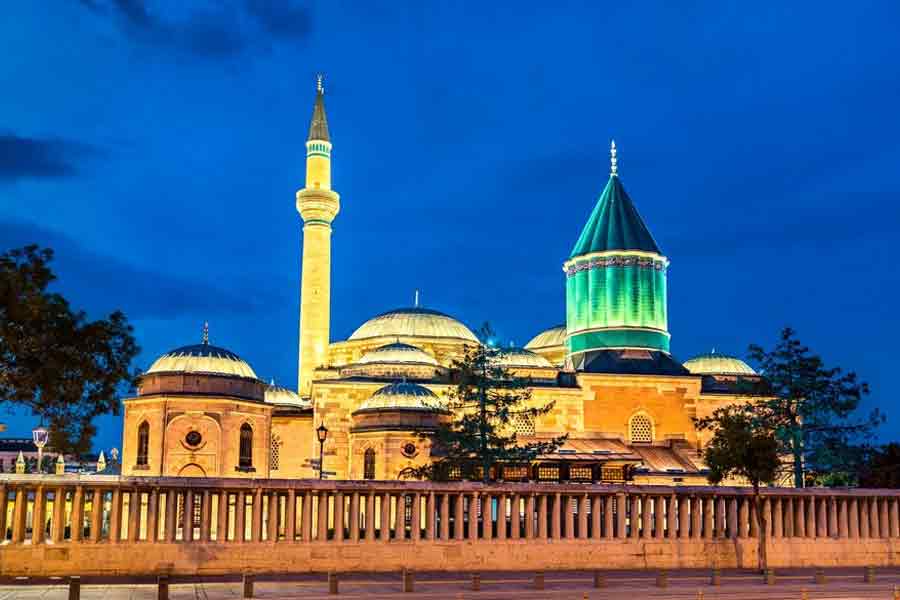For eleven days, the Turkish city of Konya will host one of the most exquisite ceremonies of spirituality with the mesmerising beauty of the Whirling Dervishes honouring Mevlana, the great Sufi mystic.
Thousands of people will gather to commemorate the life and teachings of the 13th century Persian poet and Sufi mystic Rumi – also known as Mevlana. The unity of being is the central tenet in the transcendental teachings of this Islamic philosopher who believed that dance and music led to a higher consciousness, which in turn helped to discover divine love. The festival therefore is full of Sufi dance and music ceremonies – called Sema – performed by Mevleni or followers of Rumi.
Going Deep with the Dervishes
Rumi was born in Afghanistan, spent time in Persia (Iran), then settled in Konya, Turkey when his father was invited there to be a scholar. Rumi became an Islamic scholar himself teaching peace, love, and tolerance. He built quite a following of the educated – who saw him as a wise philosopher – and uneducated – who saw him as a prophet.
Rumi’s life changed when he created an intense friendship with an older, wandering mystic -- Shams of Tabriz. Shams was a brilliant outcast and Rumi was deeply drawn to a learning relationship with this man who was ultimately supposedly killed by some of Rumi’s fans due to the influence he was having on the younger Rumi. From this tragedy, Rumi found a deep well inside himself filled with an ability to channel poetry. It was about this time that he also introduced the experience of divine harmony that comes from whirling. Thus, a new form of religious ecstasy was created and the Whirling Dervishes (also known as the Mevlevi order) have been doing this annual ceremony marking Rumi’s death for almost 750 years.
This is the start of the Sema (ceremony) with each Semazen (dancer) bowing upon arriving on stage and the Basi (the leader) at the “head of the class.” The mesmerizing ceremony represents man’s journey to the oneness of perfect truth – amidst separation and longing - through the power of divine love. In 2005, UNESCO proclaimed the “Mevlevi Sema Ceremony” as amongst the Masterpieces of the Oral and Intangible Heritage of Humanity.
Rumi and Sufism, The Mevlevi Order of Islam
Rumi, his poetry and his teachings were the inspiration behind the Mevlevi Order of Islam, also known as Islamic Sufism. The movement was officially founded in 1273 by Rumi’s followers after his death. He was fondly named ‘Mevlana’ by his supporters, which translates as “our master” and even today, his influence transcends national borders and ethnic divisions: Iranians, Tajiks, Turks, Greeks, Pashtuns and the Muslims of Central and South Asia, have greatly appreciated his spiritual legacy for the past seven centuries. But now, his doctrines are highly thought of all over the world and nobody could have predicted just how popular his ideas would become. Sufism is centred around the core meaning of peace, love and tolerance on the road to enlightenment.
Rumi is buried in a tomb in Konya at the Mevlana Museum. The site now acts a shrine and a point of pilgrimage for millions of spiritualists and tourists every year. The Mevlana festival is held over ten days in December, with its culmination on the 17th, the anniversary of Rumi’s death. Sufis call this ‘Sabe Arus’, meaning “nuptial night”, the night of Rumi’s union with God. The festival is an authentic, indigenous gathering where spectators are honoured to witness magical, trancelike and elegant dance performances. Sufis gather, dressed traditionally in a costume of five parts; a robe with a weighted skirt, undergarments, a jacket, a belt and the traditional tall hat. The Sufis dance by spinning themselves around with their arms in the air, gradually increasing speed as they become transcended, with the intention of inviting the love of God to travel through their bodies from heaven down to earth. They are known as the Whirling Dervishes and their ritual dance is called ‘Sama’.
Mevlana Museum
The large tekke (lodge) along with its mausoleum and the conical green dome that rests above the tomb of Rumi have all become iconic representations of Konya.
Overall, the place looks truly stunning. Starting from the impressive architecture, with the green dome on top of it, to the gracious garden – filled with tombstones, trees, roses, and beautiful fountains. The whole complex contains many different buildings, including a mausoleum, a museum, and even a library.
You can also see the cells where Rumi’s students lived and studied. Currently, these cells contain artifacts of dervish life, ranging from musical instruments and calligraphy to textiles and traditional clothing.
Mausoleum
While the Mevlana Museum looks truly astonishing, only the Rumi’s mausoleum has stayed the same as it was, when he was present. The rest of the lodge’s layout was developed in the 16th century, hundreds of years after Rumi’s death.
Collections
The lodge also contains the Mevlana Museum which includes a large collection of Mevlana Order’s cultural artifacts: wooden and metal art, precious carpets and books.
Part of the museum serves as a library with more than 500 books and almost 2000 manuscripts, including a collection of invaluable Qurans.
Ceremony
While the museum is worth visiting on its own, the main reason for such a high amount of visitors, coming to Konya, are the whirling dervish ceremonies. There couldn’t be a better place to attend an authentic ceremony, than the place where they started.
The best time to visit the ceremony is in December – from 10th till 16th. For 6 days, each evening, the whirling dervishes will perform their ceremony and will be open for visitors.
Recently, the ceremonies started to be held also in the summertime, every Thursday night (approximately from June to September). And to enhance the experience, it’s held in the rose garden – making the ceremony even more beautiful and experience more memorable.
This is a wonderful place for seeing the ceremony, as it’s performed by authentic Sufi dervishes, opposing to many other places with professional dancers instead.





